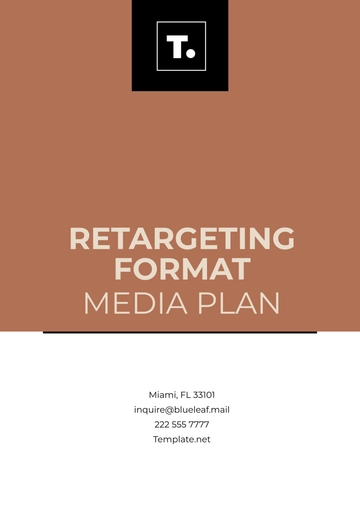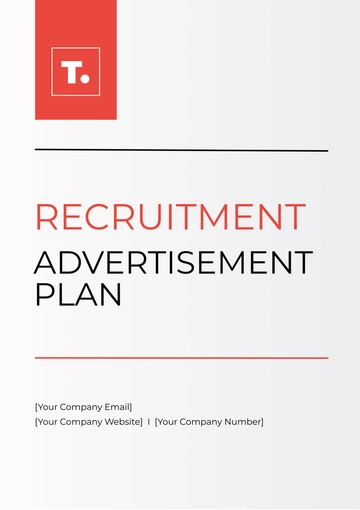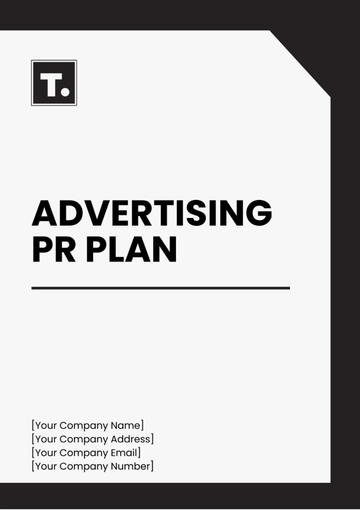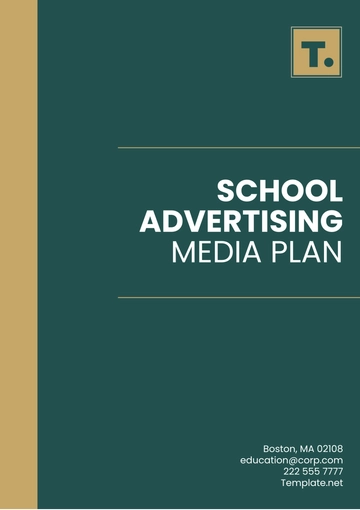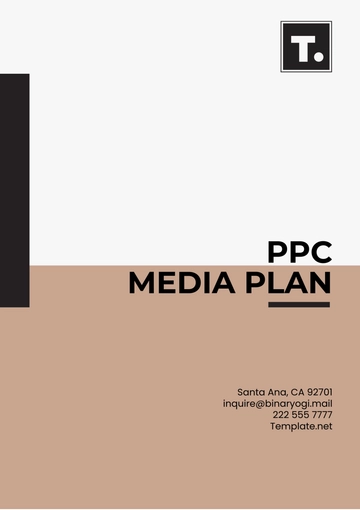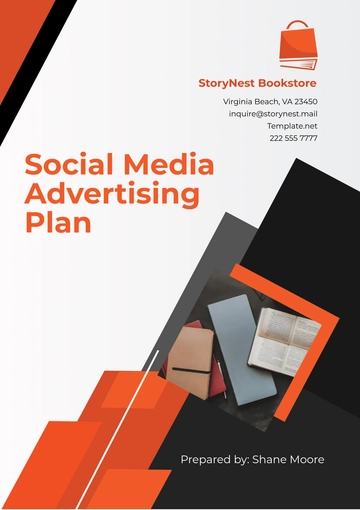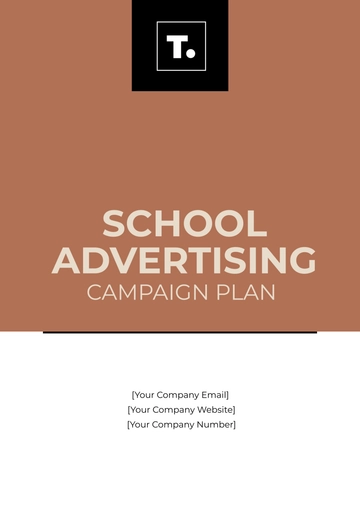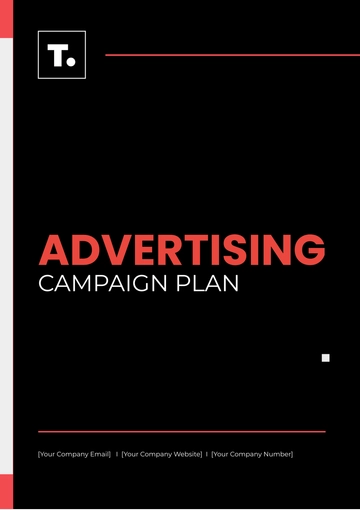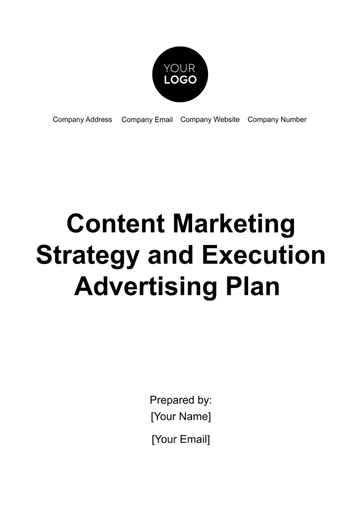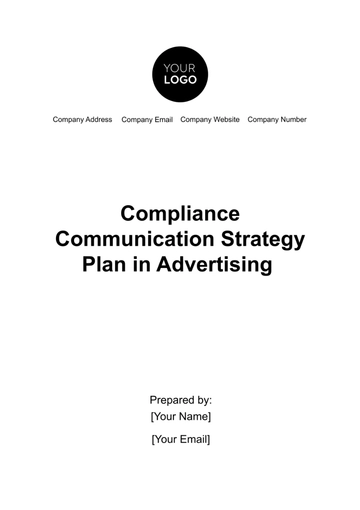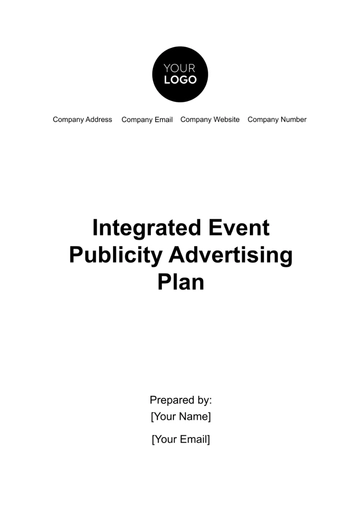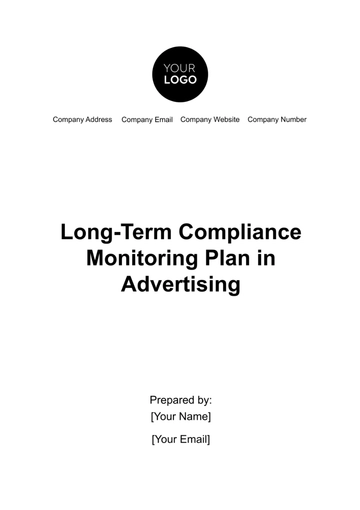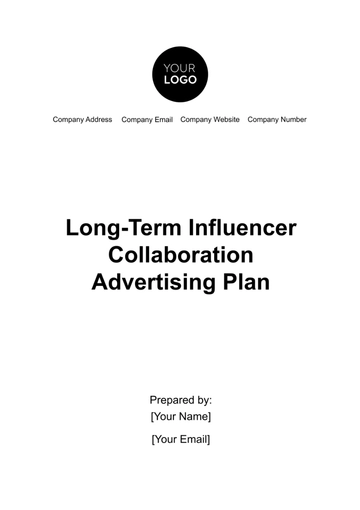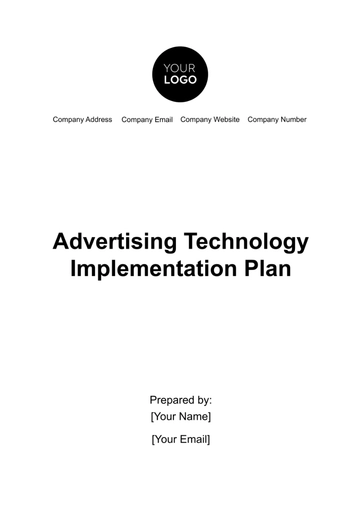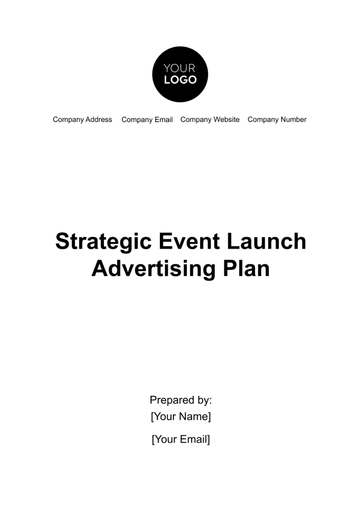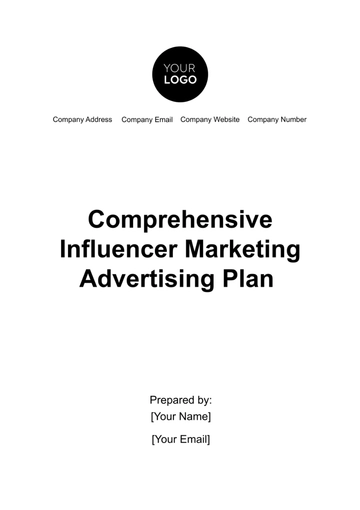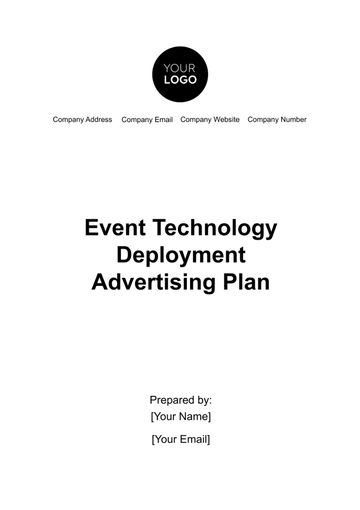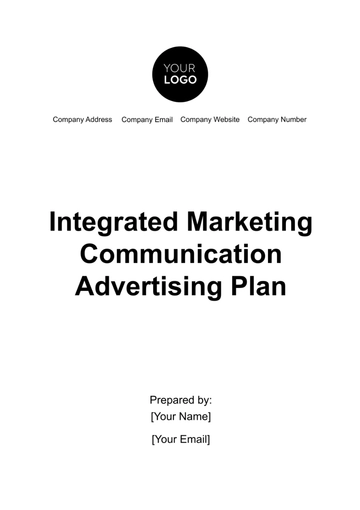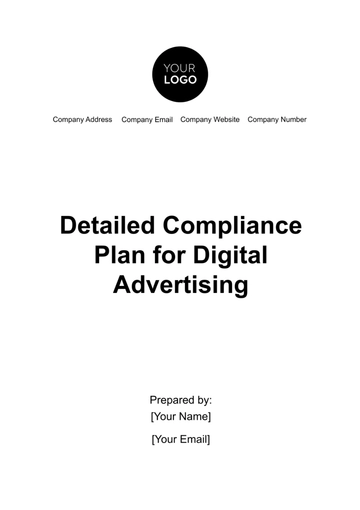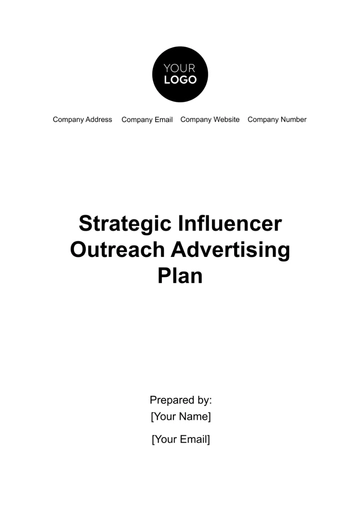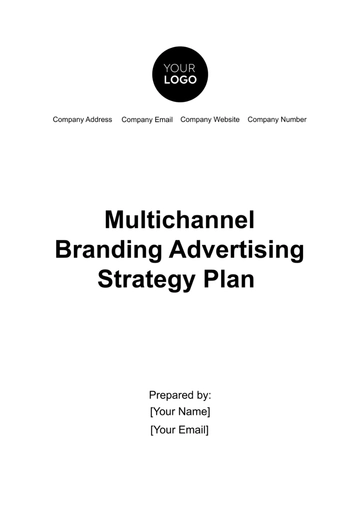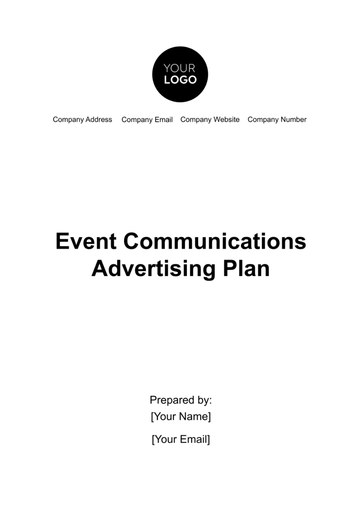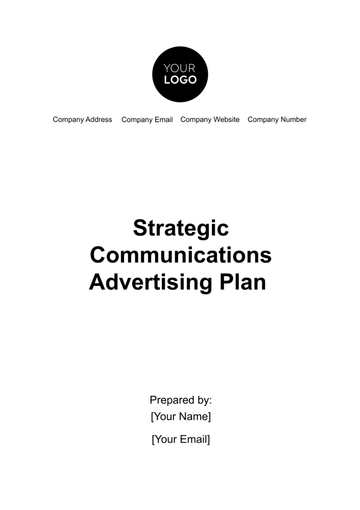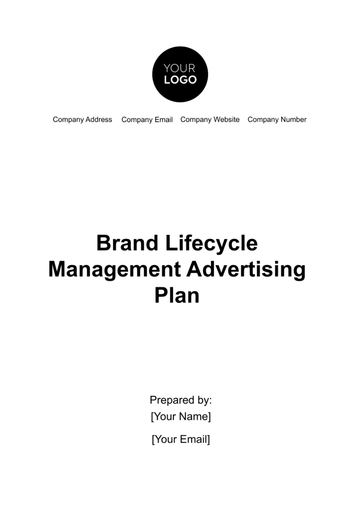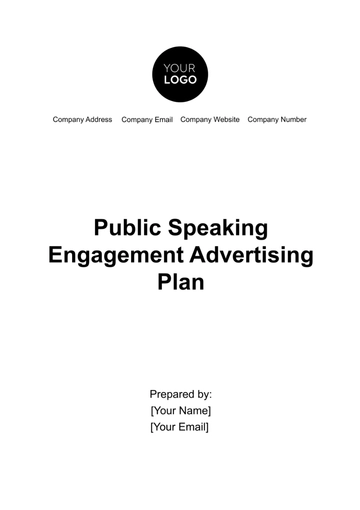Free Event Audience Acquisition Advertising Plan
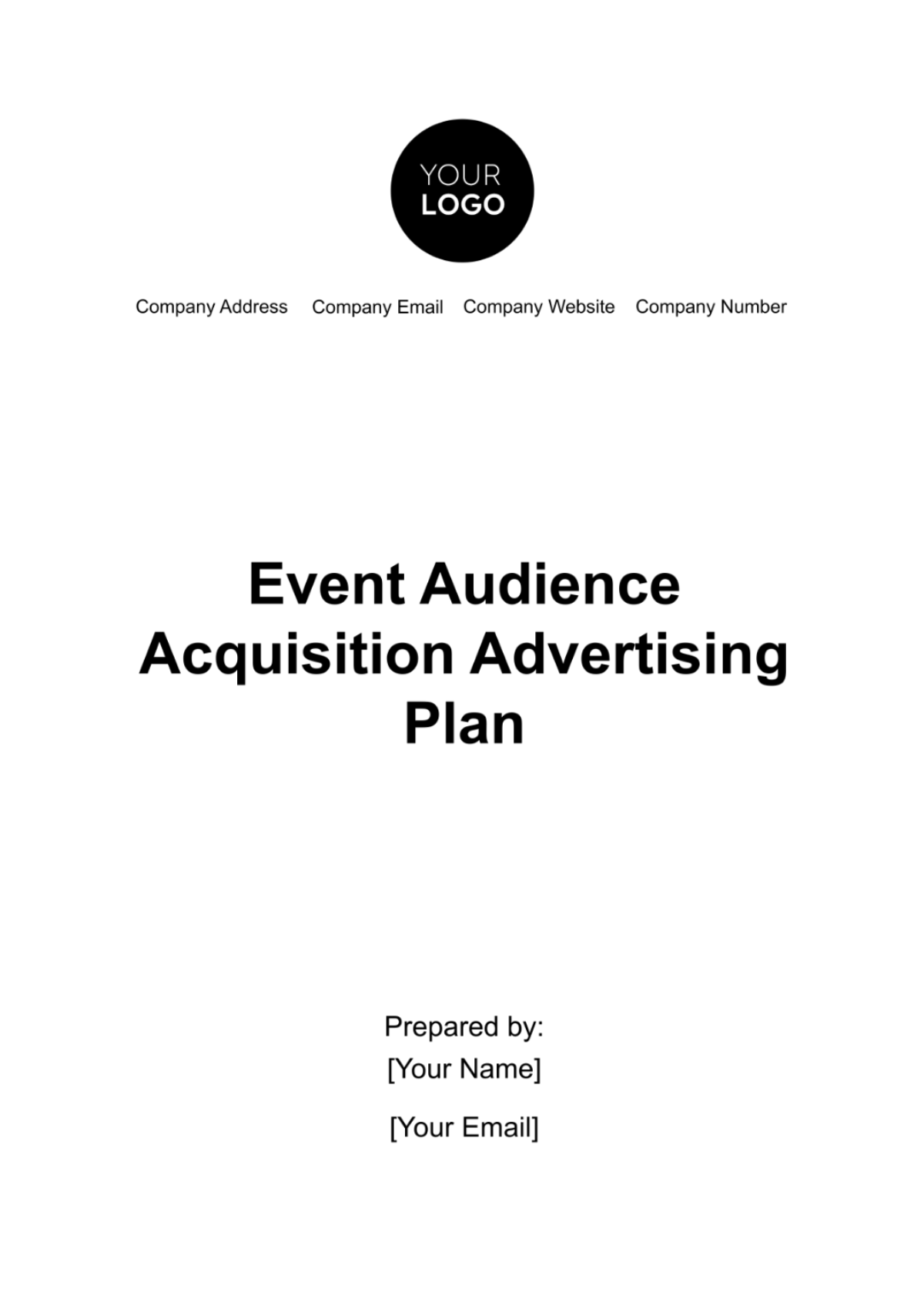
I. Introduction
Background
In the dynamic landscape of our digital era, where experiences are not just attended but curated, [Event Name] emerges as a beacon of innovation and engagement. This exclusive event seeks to transcend conventional boundaries, offering attendees an immersive journey into [industry/domain] trends and advancements.
As a [Your Company Name] initiative, [Event Name] is strategically designed to [purpose], elevating the discourse within our industry. With an unwavering commitment to excellence, this event aspires to foster knowledge exchange, networking opportunities, and a profound exploration of [key themes].
Objectives
The fundamental objectives of this event are multifaceted. [Event Name] endeavors to:
A.Propel brand awareness within our target audience.
B.Cultivate a vibrant and diverse community of professionals.
C.Showcase [Your Company Name]'s thought leadership and cutting-edge contributions.
D.Facilitate meaningful connections and collaborations among industry stakeholders.
By strategically aligning these objectives, [Event Name] aims to not only meet but exceed the expectations of our discerning audience, establishing itself as a hallmark event in the [industry/domain].
II. Target Audience Profiling
Demographic Analysis
Conduct an exhaustive examination of the demographic landscape pertinent to our target audience. This includes but is not limited to age, gender, income levels, educational background, and geographic location. Through meticulous demographic analysis, we aim to discern the defining characteristics that will enable precision in our advertising strategy.
Psychographic Segmentation
Delve into the intricate nuances of psychographic segmentation to unravel the deeper layers of our audience's lifestyles, values, interests, and personality traits. This profound understanding will serve as the foundation for crafting messaging that resonates on a personal and emotional level, establishing a profound connection with our audience.
Behavior Analysis
Embark on a comprehensive exploration of the behavioral patterns exhibited by our target audience. By scrutinizing their past interactions, preferences, and engagement habits, we seek to predict future behaviors, allowing us to strategically position our advertising efforts to align seamlessly with their expectations and habits. This behavioral analysis serves as a crucial compass guiding our outreach endeavors.
III. Budget Allocation
In this section, we meticulously outline the financial blueprint for the Event Audience Acquisition Advertising Plan. The judicious allocation of resources is imperative to ensure the optimal utilization of funds across diverse advertising channels. The budgetary considerations encompass both direct costs associated with specific advertising activities and indirect costs related to supporting elements.
A. Financial Considerations
The financial allocation is structured to align with the overarching goals of the advertising campaign. A detailed breakdown of the budget is presented below:
Table: Overall Budget Breakdown
Category | Allocation ($) |
Social Media Advertising | $10,000 |
Online Advertising | |
Print Media | |
Other Promotional Activities | |
Contingency Fund | |
Total | $100,000 |
Explanation
1. Social Media Advertising
This includes sponsored posts, targeted ads, and promotional campaigns across platforms such as Facebook, Instagram, and Twitter.
2. Online Advertising
Budget reserved for digital advertising on relevant websites, blogs, and industry-specific online platforms.
3. Print Media
Allocated funds for traditional print media channels, ensuring coverage in industry magazines, newspapers, and promotional materials.
4. Other Promotional Activities
Funding for additional activities such as promotional events, partnerships, or collaborations contributing to audience acquisition.
5. Contingency Fund
A reserved portion to address unforeseen challenges or opportunities that may arise during the campaign.
Resource Allocation
Beyond financial considerations, resource allocation involves distributing human resources, time, and expertise effectively. The following delineates the strategic distribution of non-financial resources:
Internal Team: Designated team members responsible for content creation, graphic design, and campaign management.
External Agencies: Engagement of external agencies for specialized tasks, ensuring a comprehensive and expert approach.
Timeline And Scheduling: Strategic planning of resource utilization throughout the pre-event, during-event, and post-event phases.
This comprehensive budget allocation framework aims to provide a transparent and accountable structure, ensuring that each aspect of the advertising campaign receives the necessary resources for optimal execution. Adjustments may be made based on evolving needs and insights gathered during the planning and execution stages.
IV. Advertising Channels And Platforms
In navigating the dynamic landscape of event advertising, the strategic selection of diverse and impactful channels and platforms is paramount. The following section delineates the intricacies of our chosen avenues, each meticulously curated to resonate with our target audience and maximize outreach.
A. Social Media
Facebook: Harnessing the expansive reach of Facebook, we embark on a multifaceted approach. Leveraging sponsored posts, event pages, and strategic collaborations, we aim to create a compelling digital footprint that transcends mere visibility, fostering active engagement.
Instagram: Immersing ourselves in the visually dynamic realm of Instagram, our strategy revolves around captivating imagery, engaging stories, and strategic hashtag utilization. By encapsulating the essence of our event visually, we seek to captivate and enthrall our audience.
Twitter: In the succinct yet impactful sphere of Twitter, brevity meets resonance. Our campaign on this platform will be characterized by concise, impactful messaging, supplemented by relevant hashtags and retweetable content to amplify our reach within the target demographic.
B. Online Advertising
Capitalizing on the vast expanse of online advertising, our approach involves strategic placements on popular websites frequented by our target audience. Display ads, native content, and strategically timed promotions will converge to create a digital presence that seamlessly integrates with the online experiences of our audience.
C. Print Media
While digital dominates, the enduring influence of print media persists. Meticulously selected publications, both local and industry-specific, will feature advertisements strategically crafted to appeal to our target demographic. This multi-sensory approach ensures a holistic engagement strategy that extends beyond the digital realm.
D. Other Promotional Activities
Beyond the virtual realm, our campaign extends into the physical space through diverse promotional activities. Collaborations with local businesses, community outreach programs, and innovative guerrilla marketing endeavors will serve as extensions of our digital narrative, creating a tangible and immersive presence within our audience's daily lives.
In harmonizing these diverse channels, our advertising strategy becomes a symphony of mediums, each contributing a unique note to the overarching composition. Through meticulous orchestration, we aim to create a resonant and memorable prelude to our event, ensuring a harmonious connection with our discerning audience.
V. Messaging And Content Strategy
Core Message Development
Craft a compelling and concise core message that encapsulates the essence of the event, aligning with its objectives and resonating with the target audience. Ensure clarity, relevance, and a unique value proposition.
Content Creation Guidelines
Establish comprehensive guidelines for content creation across various channels. Emphasize consistent brand messaging, tone, and visual elements. Tailor content to suit the preferences and behaviors identified in the target audience profiling.
Visual Elements And Design Standards
Define the visual identity of the campaign, including logos, color schemes, and imagery. Ensure adherence to design standards to maintain a cohesive and professional appearance. Visual elements should complement and enhance the overall messaging strategy.
VI. Timeline And Schedule
Pre-Event Phase
In this phase, meticulous planning and preparation are essential for a seamless execution of the advertising campaign.
A. Week 1-2: Campaign Kickoff
Finalize target audience profiling.
Develop core messaging and content strategy.
Allocate budget and resources.
B. Week 3-4: Advertising Channel Setup
Establish social media accounts and advertising campaigns.
Coordinate with online advertising platforms.
Initiate print media collaboration.
C. Week 5-6: Content Creation And Review
Create compelling content aligned with messaging strategy.
Conduct internal and external content reviews.
Refine visual elements and design standards.
During-Event Phase
This phase focuses on maintaining momentum and engagement during the event.
A. Week 7-8: Pre-Event Teasers
Launch teaser campaigns on social media.
Implement online countdowns and exclusive previews.
Distribute promotional materials through print media.
B. Event Week: Real-Time Engagement
Monitor and respond to social media interactions in real-time.
Execute planned online and offline promotions.
Capture and share live event highlights.
Post-Event Phase
Evaluation and analysis take center stage in the post-event phase.
A. Week 9-10: Data Collection And Initial Analysis
Gather attendance metrics, engagement rates, and other relevant data.
Conduct preliminary analysis for immediate insights.
B. Week 11-12: Comprehensive Analysis And Recommendations
Dive deeper into collected data for in-depth analysis.
Formulate recommendations for future event advertising strategies.
Compile a comprehensive post-event report.
Summary Table: Timeline And Schedule
Phase | Activities | Duration |
| Campaign kickoff | 2 weeks |
Advertising channel setup | ||
Content creation and review | ||
During-Event | Pre-Event teasers | |
Real-time engagement | ||
Post-Event | Data collection and initial analysis | |
Comprehensive analysis and recommendations |
VII. Metrics And Key Performance Indicators (KPIs)
Measurement Framework
A. Attendance Metrics
Establish a robust system for tracking and analyzing attendance figures throughout the event. Utilize registration data, check-ins, and real-time monitoring to gauge the overall event turnout.
B. Engagement Rates
Determine the effectiveness of audience interaction with event content. Evaluate engagement across various channels, such as social media, interactive sessions, and promotional materials.
C. Click-Through Rates
Monitor the click-through rates of online promotional materials, including advertisements and event registration links. Assess the resonance of the messaging and the conversion rates of these interactions.
D. Social Media Interactions
Quantify and analyze the extent of audience engagement on social media platforms. Track likes, shares, comments, and overall sentiment to gauge the event's online impact.
Data Analysis And Reporting
Implement a comprehensive data analysis approach to derive actionable insights from the collected metrics. Develop detailed reports highlighting performance against established KPIs.
Recommendations For Future Strategies
Based on the post-event analysis, provide strategic recommendations for refining future event advertising plans. Propose adjustments to messaging, channels, or targeting to optimize outcomes.
Incorporate these metrics and KPIs into a cohesive framework, enabling a thorough evaluation of the event's advertising efficacy and providing valuable insights for continuous improvement in subsequent campaigns.
VIII. Contingency Plans
Identification Of Potential Challenges
Identify potential challenges that may arise during the event advertising campaign. Anticipate scenarios such as unexpected budget constraints, technical issues with chosen platforms, or shifts in the target audience's behavior.
Contingency Strategies And Solutions
Develop comprehensive contingency strategies and solutions to effectively address identified challenges. Clearly outline step-by-step procedures for implementation, ensuring a swift and agile response to any unforeseen circumstances.
In the event of budget constraints, establish alternative funding sources or reallocate resources judiciously without compromising the overall campaign objectives. For technical issues, collaborate with IT specialists to troubleshoot and resolve them promptly.
IX. Collaboration And Coordination
Stakeholder Identification
Identify and categorize key stakeholders involved in the event advertising campaign. This includes internal teams, external agencies, and any individuals critical to the success of the initiative.
Streamlined Communication Channels
Establish clear and efficient communication channels to facilitate seamless collaboration among stakeholders. This involves regular updates, feedback loops, and scheduled meetings to ensure everyone is aligned with the overarching advertising strategy.
X. Evaluation And Post-Event Analysis
Data Collection
Gather comprehensive data encompassing attendance records, engagement metrics, click-through rates, and social media interactions.
Insights And Analysis
Conduct a thorough analysis of the collected data to extract meaningful insights. Identify trends, patterns, and areas of improvement.
Recommendations For Future Strategies
Based on the insights gained, formulate strategic recommendations to enhance future event advertising plans. This includes adjustments to messaging, channel selection, and overall campaign structure to optimize results and audience acquisition.
- 100% Customizable, free editor
- Access 1 Million+ Templates, photo’s & graphics
- Download or share as a template
- Click and replace photos, graphics, text, backgrounds
- Resize, crop, AI write & more
- Access advanced editor
Introducing Template.net's Event Audience Acquisition Advertising Plan Template. This editable and customizable tool, enhanced by our AI Editor Tool, facilitates strategic planning to attract target audiences. From market segmentation to engagement tactics, optimize your event promotion strategies with precision. Empower your audience acquisition efforts with Template.net's innovative solutions.
You may also like
- Finance Plan
- Construction Plan
- Sales Plan
- Development Plan
- Career Plan
- Budget Plan
- HR Plan
- Education Plan
- Transition Plan
- Work Plan
- Training Plan
- Communication Plan
- Operation Plan
- Health And Safety Plan
- Strategy Plan
- Professional Development Plan
- Advertising Plan
- Risk Management Plan
- Restaurant Plan
- School Plan
- Nursing Home Patient Care Plan
- Nursing Care Plan
- Plan Event
- Startup Plan
- Social Media Plan
- Staffing Plan
- Annual Plan
- Content Plan
- Payment Plan
- Implementation Plan
- Hotel Plan
- Workout Plan
- Accounting Plan
- Campaign Plan
- Essay Plan
- 30 60 90 Day Plan
- Research Plan
- Recruitment Plan
- 90 Day Plan
- Quarterly Plan
- Emergency Plan
- 5 Year Plan
- Gym Plan
- Personal Plan
- IT and Software Plan
- Treatment Plan
- Real Estate Plan
- Law Firm Plan
- Healthcare Plan
- Improvement Plan
- Media Plan
- 5 Year Business Plan
- Learning Plan
- Marketing Campaign Plan
- Travel Agency Plan
- Cleaning Services Plan
- Interior Design Plan
- Performance Plan
- PR Plan
- Birth Plan
- Life Plan
- SEO Plan
- Disaster Recovery Plan
- Continuity Plan
- Launch Plan
- Legal Plan
- Behavior Plan
- Performance Improvement Plan
- Salon Plan
- Security Plan
- Security Management Plan
- Employee Development Plan
- Quality Plan
- Service Improvement Plan
- Growth Plan
- Incident Response Plan
- Basketball Plan
- Emergency Action Plan
- Product Launch Plan
- Spa Plan
- Employee Training Plan
- Data Analysis Plan
- Employee Action Plan
- Territory Plan
- Audit Plan
- Classroom Plan
- Activity Plan
- Parenting Plan
- Care Plan
- Project Execution Plan
- Exercise Plan
- Internship Plan
- Software Development Plan
- Continuous Improvement Plan
- Leave Plan
- 90 Day Sales Plan
- Advertising Agency Plan
- Employee Transition Plan
- Smart Action Plan
- Workplace Safety Plan
- Behavior Change Plan
- Contingency Plan
- Continuity of Operations Plan
- Health Plan
- Quality Control Plan
- Self Plan
- Sports Development Plan
- Change Management Plan
- Ecommerce Plan
- Personal Financial Plan
- Process Improvement Plan
- 30-60-90 Day Sales Plan
- Crisis Management Plan
- Engagement Plan
- Execution Plan
- Pandemic Plan
- Quality Assurance Plan
- Service Continuity Plan
- Agile Project Plan
- Fundraising Plan
- Job Transition Plan
- Asset Maintenance Plan
- Maintenance Plan
- Software Test Plan
- Staff Training and Development Plan
- 3 Year Plan
- Brand Activation Plan
- Release Plan
- Resource Plan
- Risk Mitigation Plan
- Teacher Plan
- 30 60 90 Day Plan for New Manager
- Food Safety Plan
- Food Truck Plan
- Hiring Plan
- Quality Management Plan
- Wellness Plan
- Behavior Intervention Plan
- Bonus Plan
- Investment Plan
- Maternity Leave Plan
- Pandemic Response Plan
- Succession Planning
- Coaching Plan
- Configuration Management Plan
- Remote Work Plan
- Self Care Plan
- Teaching Plan
- 100-Day Plan
- HACCP Plan
- Student Plan
- Sustainability Plan
- 30 60 90 Day Plan for Interview
- Access Plan
- Site Specific Safety Plan

